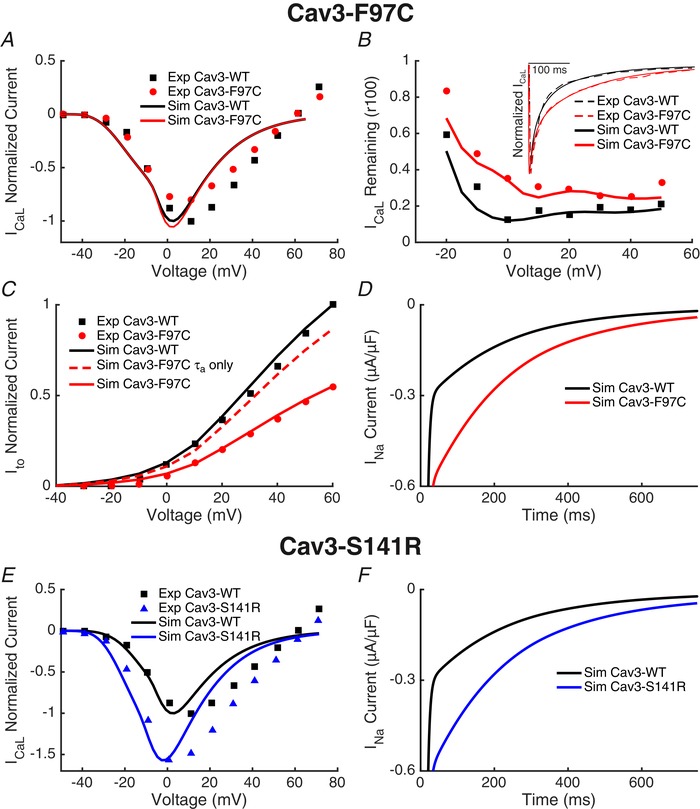Figure 10.

Reparameterization of the O'Hara–Rudy model to reproduce Cav3 mutant effects on ionic currents
A, because the I Ca,L I–V relationship was not significantly different between the Cav3‐WT and Cav3‐F97C, the peak conductance, steady‐state activation and steady‐state inactivation were not altered between the Cav3‐WT and Cav3‐F97C models. B, current decay of I Ca,L determined by measuring the ratio of current present after 100 ms of a voltage step relative to the peak current (r100) was similar between experimental Cav3‐WT results and the Cav3‐WT model. I Ca,L CDI time constants were slowed to recapitulate experimental Cav3‐F97C results in the Cav3‐F97C model. The inset shows a representative I Ca,L traces experimental and with the computational model response to the same test voltage with the Cav3‐WT and Cav3‐F97C models. C, slowing the Ito activation time constant resulted in a small decrease in current density. Current density was further reduced by scaling the channel conductance to fit the observed reduction in IKv4.3 with Cav3‐F97C. D, INa,L conductance was doubled in the Cav3‐F97C model. E, for the Cav3‐S141R model, ICa,L was altered by increasing the peak current and shifting the steady state inactivation cure more negative compared to the Cav3‐WT model. F, INa,L conductance was doubled in the Cav3‐S141R model.
